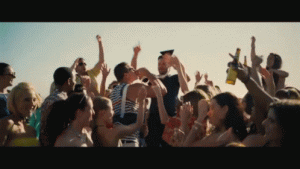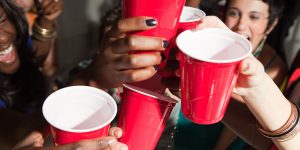Background on the Topic

In 1984, the United States government voted to increase the minimum legal drinking age (MLDA) to 21. This new legislation was called the National Minimum Legal Drinking Age Act (CDC). Prior to the vote, the legal drinking age was determined by state, yet most had it set at the age of 18; which is considered to be the age at which a person becomes a legal adult. However, the federal government really has no legal say in what the legal drinking age is based on the states rights that are given in the Constitution, so they told the states that if they didn’t comply with raising their MLDA they would pull their highway funding (NY Post). Now, they did have a reason to make such a drastic move. The motivation was to help combat the number of deaths related to drunk driving.
Since the change was made, we have seen a drastic decrease in not only DUI’s (Driving Under the Influence), but also drinking across the board. Statistics given by the CDC state that those between the ages of 18-21 who drank dropped from 59% in 1985 to 40% in 1991. It also showed a significant decrease in those between the ages of 21-25 who drank from 70% to 59% between the years 1985 and 1991.
However, it would be false to say that this drop could be purely because of the raised MLDA. As the science shows, the decrease in drinking dropped rapidly across two age groups, one of whom was not affected by the new drinking age. It also shows that there was a decrease in drinking across all age demographics. Now, the new age restrictions could be a large part of it, however, since the MLDA was raised, the government has been much harsher with their laws and punishments of anyone who breaks those laws. The current decrease in incidents related to drunk driving could also be attributed to new technology that allows for people to call friends, family, or a driving service so they can get home safely.
I would like to point out that the raised MLDA has also created many issues that have become a point of debate. The first would be that currently turning 18 leads to no further freedoms. Sure, a person could live on their own, sign a contract, adopt a child, be charged for a crime as an adult, or enlist in the military, but they can’t smoke a cigarette or purchase alcohol (NY Post)(Youth Rights). It seems as though there is an unequal balance where there are many more responsibilities, yet no freedoms to balance it out.
Another is that the new drinking age has created an awkward gap in the college population. It’s put students in a position where they feel the societal norm is to drink, yet if they get caught drinking underage or supplying alcohol to underage students the charges are much harsher as they are legal adults. Dr. Laurence Steinberg, a psychology professor at Temple University stated, “We’ve set up a real dilemma on college and university campuses, where basically you have half the people who are enrolled legally permitted to drink and the other half not legally permitted to drink. And I think that that sets up all kinds of dysfunctional and strange patterns of drinking as a result of that. I think setting an age where it would be legal for [all] college students to drink would probably improve things,” (CBS). This statement is really showing the significant barrier between students on a college campus right at the point where they are finally beginning to become independent and need the most support.
A third argument I would like to bring to the table is the topic of the societal pressures of drinking in college. It’s plastered everywhere from music videos, to tv shows, to movies. Children in America grow up on the idea of college frat parties being a societal norm, and with parties, comes alcohol. The new drinking age means that students are still going to find ways to obtain alcohol and party, but they are going to reach for liquor and spirits as they are easier to hide and easier to mix. Students are willing to binge drink harsher substances for the chance at being considered normal in college due to the higher drinking age.
The final argument is the safety of young adults between the ages of 18 and 20. As it is illegal for people under the age of 21 to drink, it leads to serious consequences for any person involved in underage drinking. Once they hit this specific age bracket, however, those consequences increase dramatically. So, to make sure that they aren’t caught, they will put their lives on the line before they receive help. If a young adult happens to drink too much, they will almost certainly refuse medical attention unless it becomes absolutely necessary. In cases where a person does need medical attention, they also aren’t sure they will be able to rely on their friends to get them the aid they need if their friends are also scared of being pulled into the consequences.
18 and 21
I believe that there is an easier way of ensuring that the effects on the public health of Americans are minimized along with the issues that come with the raised drinking age. We should attempt to have a system similar to what is seen in certain European nations where the legal drinking age is split. However, rather than the ages being set at 16 and 18, it would be a raised age of 18 and 21. This means that people at the age of 18 would be able to purchase alcohol such as beer, wine, and seltzers; all that have a lower alcohol percentage. However, once they reach the age of 21, they would be able to purchase harder substances such as spirits and liquors.
I believe that if we made this change, we would see a massive difference in the college drinking culture. Sure, you will still have harsher substances come up at parties, however I think that we will see even organizations such as fraternities and sororities going back to providing beer, which is much cheaper, because they wont have the need to hide it.
Overall, the new system would help equal out some of the imbalance that comes from the high responsibility and solve most of the age gap found in colleges. I believe we would also see students being more comfortable with the societal norm, without too much overindulgence, and young adults would be able to get the proper medical attention that is necessary without fear of the consequences.




